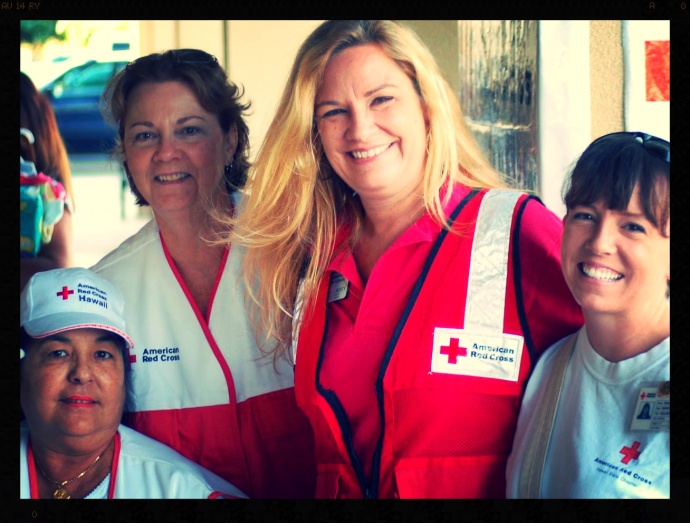Hawaiʻi Red Cross Prepares for Flossie

Red Cross Volunteers Barbara Jean Eberly, Arleen Carvalho, Maui County Director Michele Liberty, and Shannon Pyland. Courtesy Photo, Maui Red Cross.
By Wendy Osher
Volunteer workers with the Hawaiʻi State Chapter of the American Red Cross are on standby for activation on Oʻahu, Maui and Hawaiʻi in response to Tropical Storm Flossie.
By 4 a.m., the agency had anticipated opening shelters on the Big Island of Hawaiʻi at the following locations: Pāhoa Community Center, Aunty Sally’s Lūʻau Hale, Laupāhoehoe Charter School, Honokaʻa Sports Complex, Waimea Community Center, Hisaoka Gym in North Kohala, Mt. View School, Pāhala Community Center, and the West Hawaiʻi Civic Center.
The Red Cross announced that it is prepositioning supplies to areas prone to flooding.
The Red Cross encourages the public to be prepared before disasters strike by getting a disaster kit, making a plan and being informed.
The agency recommends that individuals have 7 days’ worth of supplies at home to shelter in place or in a compact portable container. Suggested disaster kit items include the following:
- Water – 1 gallon per person per day
- Food – non-perishable easy-to-prepare
- Flashlight
- Radio -NOAA Weather Radio
- Extra batteries
- First aid kit
- Medications & Medical items
- Manual Can opener
- Multi-purpose tool
- Personal hygiene items
- Copies of Documents (prescriptions, proof of address, deed/lease to home, insurance policies and proof of identity)
- Cell phone with chargers
- Family Contact Information
- Cash
- Bedding
- Change of clothes
- Towels
- Dishes
You may also need:
- Baby supplies – bottles, baby food & diapers
- Games and activities
- Comfort items
- Pet supplies – collar, leash, ID, food, water, carrier, bowl & medications
The Red Cross advises that a disaster plan is helpful and should include ways to contact and find one another in an emergency, including two places to meet–one near the home, and one outside the neighborhood in case circumstances prevent people from returning home. The plan should also include an out-of-area emergency contact person since it may be easier to text or call long distance if local phone lines are overloaded or out of service.
The Red Cross is a non-profit humanitarian organization which provides assistance to meet the immediate emergency needs of those affected by disasters in various communities across the nation.







